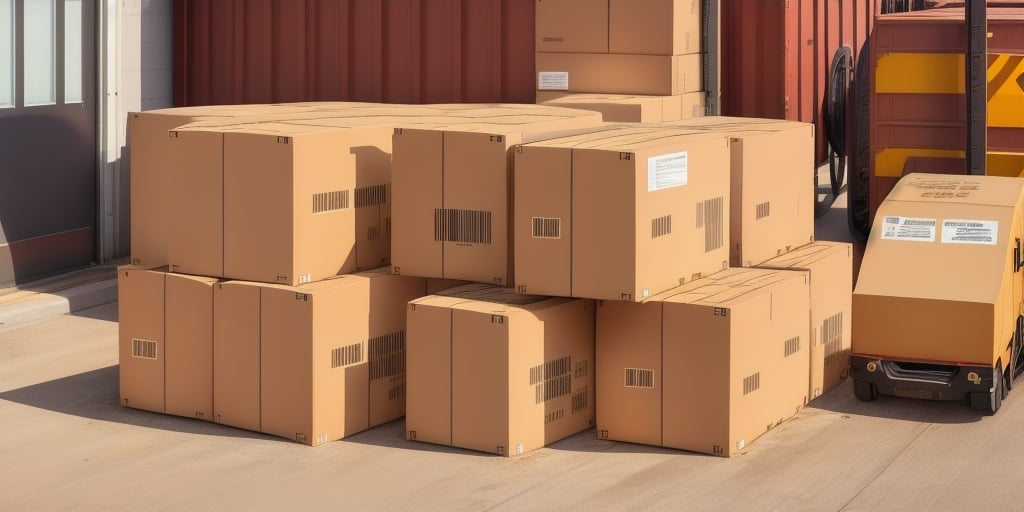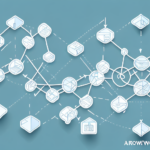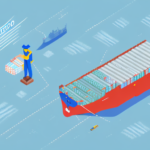Understanding Tariff Codes in International Shipping
If you're involved in shipping, you've likely encountered tariff codes at some point. These codes are fundamental in the shipping process, determining the cost of shipping and ensuring compliance with international regulations. In this section, we'll delve into the specifics of tariff codes and their critical role in international trade.
What are Tariff Codes and Their Importance?
Tariff codes, also known as Harmonized System (HS) codes, are internationally recognized numerical codes used to classify products in international trade. These codes determine the duties, taxes, fees, and restrictions applicable when goods cross international borders. Accurate tariff classification ensures that shipments are processed efficiently and that the correct tariffs are applied, which can significantly impact shipping costs.
The Relationship Between HS Codes and Tariff Codes
The Harmonized System (HS) codes are a standardized system used globally to classify traded products. While HS codes are used for international trade statistics and compliance, tariff codes are used to determine the specific duties and taxes applicable to a shipment. In UPS WorldShip, these codes help in accurately classifying goods, ensuring compliance, and optimizing shipping costs.
The Role of Tariff Codes in Customs Clearance
During customs clearance, tariff codes are examined by customs authorities to verify the declared items and apply the correct duties and taxes. Incorrect or missing tariff codes can lead to delays, additional fees, or even seizure of the shipment. Therefore, ensuring the accuracy of these codes is paramount for smooth customs clearance.
Identifying and Selecting the Correct Tariff Codes
Choosing the right tariff code for your shipment is a critical step in the shipping process. This section provides a comprehensive guide on how to identify and select the appropriate tariff codes to ensure compliance and cost-effectiveness.
How to Identify the Correct Tariff Code for Your Shipment
Identifying the correct tariff code involves analyzing the item description and determining its country of origin. Start by researching your item's HS code, which can be cross-referenced with the tariff codes used by the destination country. Remember that tariff codes can vary between countries, so always verify the code relevant to your shipment's destination.
Commonly Used Tariff Codes in UPS WorldShip
UPS WorldShip utilizes a vast library of tariff codes tailored to various destinations and products. Some frequently used codes include:
- 000000 - General Cargo
- 210690 - Food Preparations
- 854411 - Semiconductor Devices
Using the correct tariff code is essential to avoid delays and additional fees. Always double-check the codes before finalizing shipments.
Step-by-Step Guide to Using WorldShip's Tariff Code Lookup Feature
- Access the Tariff Code Lookup feature within the UPS WorldShip application.
- Enter the relevant item description or HS Code.
- Locate the correct tariff code from the search results.
- Add the selected tariff code to your shipment to ensure compliance.
This feature not only streamlines the process but also reduces the risk of errors, ensuring accurate classification and cost-effective shipping.
Managing Tariff Codes in UPS WorldShip
Effective management of tariff codes within UPS WorldShip is crucial for maintaining compliance and optimizing shipping operations. This section explores how to update, manage, and avoid common errors related to tariff codes.
Updating and Maintaining Tariff Codes
To keep your tariff codes up-to-date, navigate to the Tariff Code Maintenance screen in WorldShip. Here, you can add, modify, or remove codes as needed, especially when new tariffs are introduced or existing ones are updated. Setting default tariff codes for specific countries or regions can further streamline your shipping process.
Tips for Avoiding Common Tariff Code Errors
- Thorough Research: Familiarize yourself with the tariff system and use reliable resources to identify codes.
- Consult Experts: Engage with customs brokers or trade consultants to ensure accurate classification.
- Regular Updates: Stay informed about changes in tariff codes to prevent compliance issues.
By adhering to these best practices, you can minimize errors, reduce shipping delays, and avoid unexpected costs.
The Impact of Incorrect Tariff Codes
Using incorrect tariff codes can lead to significant consequences, including:
- Additional fees and fines
- Delays in shipping and delivery
- Potential legal complications
Ensuring the accuracy of tariff codes is not only a compliance requirement but also a financial imperative for efficient shipping operations.
Navigating Tariff Code Regulations Internationally
International shipping involves navigating a complex landscape of tariff code regulations. This section provides insights into managing these complexities to ensure seamless global trade.
Understanding International Tariff Regulations
Tariff regulations vary by country and are subject to frequent changes. It's essential to stay informed about the specific requirements of each destination country. Resources such as the World Customs Organization provide comprehensive information on international tariff regulations.
Impact of Trade Agreements on Tariff Codes
Free trade agreements between countries can significantly influence tariff codes and duties applied to shipments. Staying updated on these agreements ensures that you leverage any preferential tariffs available, optimizing shipping costs. For example, the United States-Mexico-Canada Agreement (USMCA) affects tariff classifications and duties for shipments between these countries.
Working with Customs Brokers
Collaborating with licensed customs brokers can simplify the navigation of complex tariff code systems. These professionals provide expertise in classifying goods accurately and ensuring compliance with international trade regulations, thereby reducing the risk of shipment delays and additional costs.
Best Practices for Staying Up-to-Date with Tariff Code Changes
Keeping abreast of changes in tariff codes and regulations is vital for maintaining compliance and optimizing shipping operations. This section outlines strategies to stay informed and adapt to evolving tariff landscapes.
Monitoring Official Customs Updates
Regularly check updates from official customs websites of the countries you ship to. These sources provide the most accurate and timely information on tariff code changes and regulatory updates.
Engaging with Industry Associations
Join industry associations and networks that offer insights and updates on international trade regulations. These organizations often provide resources, training, and alerts on significant changes affecting tariff codes.
Utilizing Technology and Automated Tools
Leverage technological tools and software features within UPS WorldShip to automate the tracking and updating of tariff codes. Automated alerts and updates can notify you of changes, ensuring that your tariff codes remain current and compliant.
By implementing these best practices, you can effectively manage tariff code changes and maintain a smooth and compliant shipping process.
Conclusion
Tariff codes are a critical component of the international shipping process, influencing costs, compliance, and delivery efficiency. By understanding their importance, accurately identifying and managing them within UPS WorldShip, and staying updated with regulatory changes, businesses can enhance their shipping operations and avoid potential pitfalls. Adhering to these best practices ensures that your shipments clear customs smoothly, minimizing delays and additional costs.




















